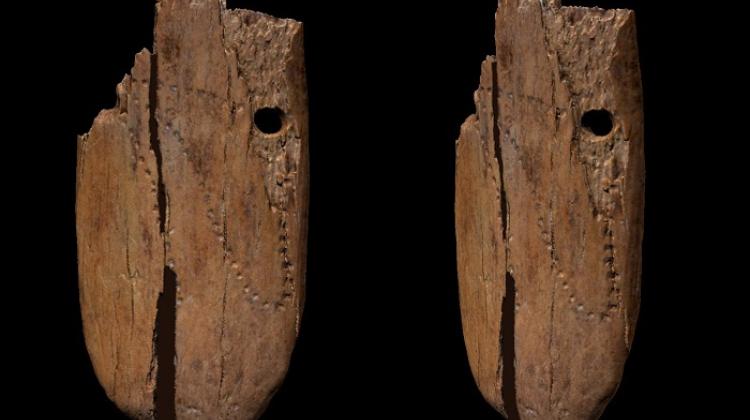Scientific row breaks out over age of ‘ancient’ mammoth ivory pendant found in Stajnia Cave
 Mammoth ivory pendant from Stajnia Cave. Credit: Antonino Vazzana, /BONES Lab
Mammoth ivory pendant from Stajnia Cave. Credit: Antonino Vazzana, /BONES Lab
A row has broken out in the scientific community over the age of a pendant made from mammoth ivory which was found in southern Poland and billed as being ‘the oldest jewellery in Eurasia’.
A row has broken out in the scientific community over the age of a pendant made from mammoth ivory which was found in southern Poland and billed as being ‘the oldest jewellery in Eurasia’.
An article appearing in respected journal Scientific Reports last week said that recent radiocarbon dating had found that the pendant discovered in Stajnia Cave was 41,500 years old.
The authors added that it is an example of the oldest known human-modified punctate ornament in Eurasia, saying: “The emergence of decoration and adornment of the human body is considered one of the earliest manifestations of symbolic behaviour, marking the beginning of ethnolinguistic identity and social complexity in human evolution.”
But now one of the scientists who discovered the pendant says it could be even older than reported.
In an interview with PAP-Science in Poland, Dr. Mikołaj Urbanowski said the publication in Scientific Reports failed to mention the results of analyses carried out in 2011 in Oxford.
According to that analysis, Urbanowski says, the pendant is even older and additional radiocarbon tests were unnecessary as they damaged the pendant because a sample had to be taken during the test.
He said: “This pendant is a class zero monument, one of the most valuable of its kind in Poland and in Europe.
“If the pendant is more than 45,000 years old we would have to re-evaluate our understanding of a key fragment of prehistory and consider a much earlier and more dynamic expansion of modern man in northern Europe, or assume the existence of intense relations between the newcomers and the Neanderthals, who were indigenous in the Old Continent.
“The most revolutionary possibility cannot be completely ruled out that the pendant was made by late Neanderthals, which would completely change our understanding of this fragment of history.”
The partially preserved pendant measuring 4.5 cm long and 1.5 cm wide was originally discovered in 2010 by researchers from the University of Szczecin.
Less than 4 mm thick, it probably had two drilled holes and decoration consisting of patterns of at least 50 sequential punctures thought to be a possible form of notation, mnemonic writing used to document astronomical phenomena or be a record of information useful during a hunt.
It is therefore not entirely clear whether the pendant was a decoration or a utility object.
Following Urbanowski’s claims, the article in Scientific Reports was temporarily removed from the publisher's website, and then returned with an editor's note that concerns had been raised and were being considered by the editors, pending response from all parties.
Scientists from the University of Wrocław, the University of Silesia, the Polish Geological Institute - PIB, the Institute of Systematics and Evolution of Animals of the Polish Academy of Sciences, as well as other researchers from the prestigious Max Planck Institute for Evolutionary Anthropology in Leipzig (Germany), the University of Bologna (Italy), Simon Fraser University (Canada), University of Colorado Boulder (USA), University of the Witwatersrand (South Africa) and the University of Copenhagen (Denmark) were also involved in the research project.
PAP - Science in Poland, Ludwika Tomala
lt/ zan/ kap/
tr. RL
Przed dodaniem komentarza prosimy o zapoznanie z Regulaminem forum serwisu Nauka w Polsce.
















